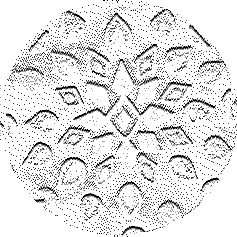


Many people are trying to find some contact with the sacred in their lives. The New Age movement is a reflection of that external quest. It embodies the search for an alternative to conventional religious practice. The diversity of available spiritual traditions reflects peoples need to find a path that suits them - that fits their personality. This has led to criticism of the New Age for being a superficial world in which the seeker is merely a consumer, shopping from teacher to teacher and tradition to tradition, unwilling to commit to any particular path. Avoiding the discipline and work that might be required for true transformation and personal development.
Hanging windchimes, buying crystals and playing synthesized music may appear to create a sacred atmosphere but many people have realised this is an illusion. That these items do not bring sacredness into peoples lives, they can only allude to it. In our consumer society there is a reluctance to believe that we cannot purchase sacredness as part of our scheme of interior decoration.
We have become so disconnected from the truly sacred that we cannot remember where we lost our connection to the source. The external search has proved unsatisfactory for many people, they have become jaded and disillusioned by any thing that carries the smell of æThe New AgeÆ. This is probably a very healthy sign in the West that we are growing up spiritually.
Some have turned to Buddhism, attracted by the simplicity and beauty of its lifestyle and philosophy. Others have looked towards the Earth traditions, particularly Native Americans and other indigenous people to try and find an example of a sacred way of life. Indigenous people have become models for many of us seeking our way. For them the whole universe is sacred. They know they are part of everything and everything is part of them. This is a radically different mindset from the Western one. To step out of this mindset is a difficult task. The tribal lifestyle and consciousness cannot thrive in the urban environment. Isolated groups that are living in this way seem destined to remain isolated, constantly struggling against the law and the status quo.
Finding a way to bring this consciousness into our ordinary over-stressed lives appears difficult, but it may be the simplest thing that we can do, far simpler than the latest fast way to enlightenment. What the Native Americans and Buddhists and many others have in common, is a reverence for what we might consider the ordinary or the mundane. By focusing on the ordinary everyday activities and acknowledging them as a significant part of our lives, not just a chore to be done as fast as possible in order to have time to meditate, we can begin to reconnect the fabric of our lives. In this way everything has importance and value, even cleaning the toilet. If we can learn to honour everything and see it as part of creation , we will find our way back to the sacred and may find the ultimate healing of truly being able to see ourselves as sacred.
Copyright © 1995 The International Communique Ltd